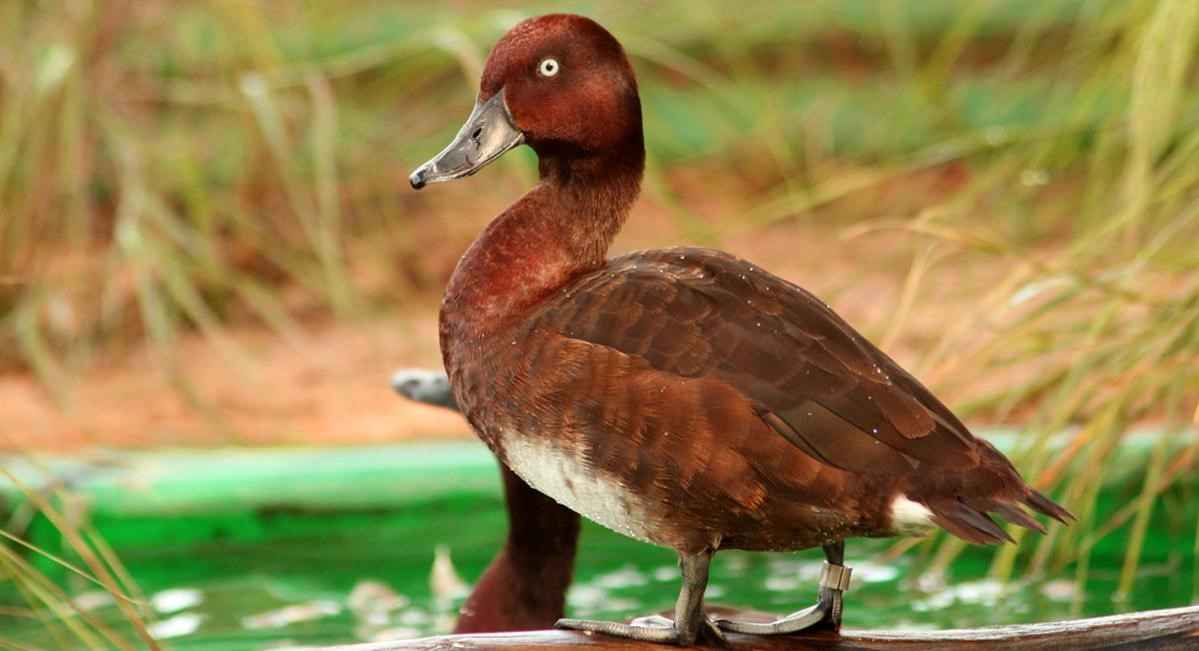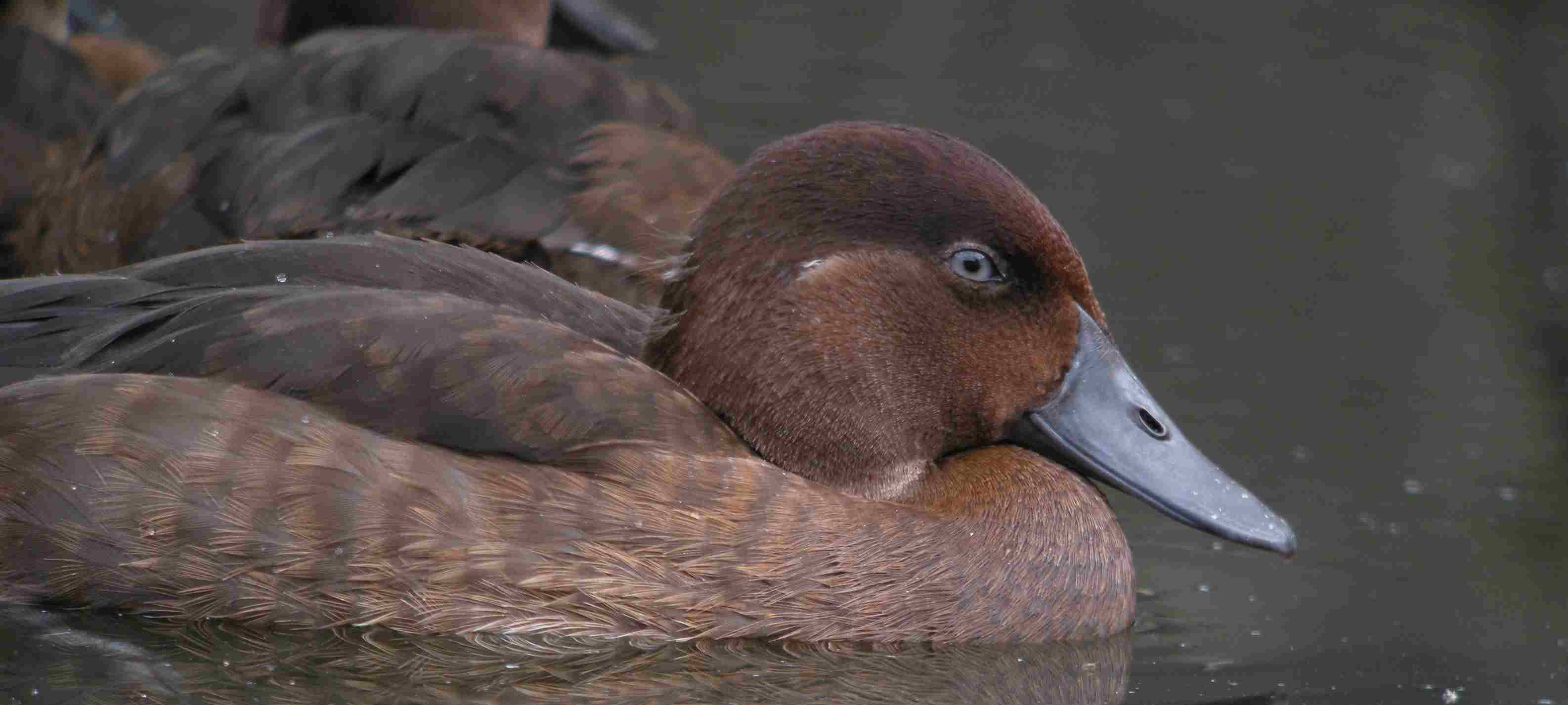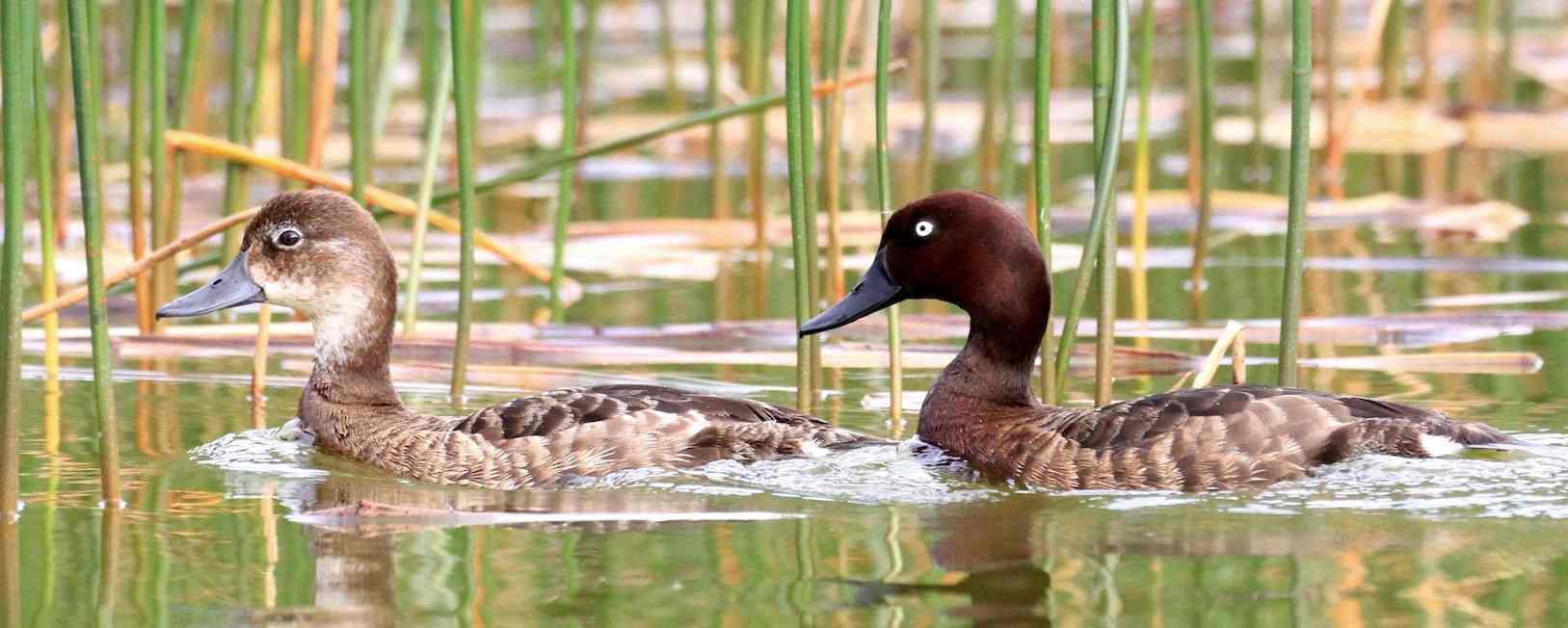The Madagascar Pochard
The Madagascar pochard (Aythya innotata) is a species of duck that was once considered one of the rarest and most endangered waterfowl in the world. Native to Madagascar, this species faced numerous threats that pushed it to the brink of extinction. However, through dedicated conservation efforts and collaborative initiatives, the Madagascar pochard has become a symbol of successful conservation, highlighting the importance of preserving biodiversity.
Appearance and Size of the Madagascar Pochard
Male Madagascar Pochard
Size: Adult males typically measure around 48 cm (19 inches) in length.
Plumage: Male Madagascar Pochards are characterized by a vibrant and eye-catching combination of chestnut and black plumage. The chestnut coloration is prominent on the head, neck, and upper body, creating a stark contrast with the black lower body and wings. This striking coloration is particularly pronounced during the breeding season, serving as an attraction for potential mates.
Facial Features: The male's face is adorned with distinctive markings, including a light-blue bill with a black tip. Their eyes are usually a bright yellow, adding to the overall visual appeal.

Female Madagascar Pochard
Size: Adult females are slightly smaller than males.
Plumage: Female Madagascar Pochards exhibit more subdued and cryptic brown tones in their plumage, providing effective camouflage in their natural habitat. This earth-toned coloring aids in nesting and protecting the ducklings from potential predators.
Facial Features: The facial features of females are less flamboyant than males, with a mottled brown appearance. The bill is generally darker than that of the males.
These distinctive physical attributes play a crucial role in the Madagascar Pochard's behavior, particularly during the breeding season. The striking coloration of the males serves as a visual cue for courtship and mate selection, contributing to the species' reproductive dynamics.

Taxonomy and Habitat
The Madagascar pochard belongs to the family Anatidae and is closely related to other diving ducks. Its scientific name, Aythya innotata, reflects its uniqueness and the challenges it has faced. Historically native to Madagascar, these ducks thrived in the wetlands and freshwater lakes of the northern part of the country. Unfortunately, habitat loss due to agricultural expansion and wetland degradation threatened their existence. Conservation initiatives have focused on restoring these vital habitats, ensuring a sustainable environment for the Madagascar pochard to thrive.
Reproduction
The reproduction of the Madagascar pochard involves intricate processes influenced by their aquatic habitat. Breeding typically occurs during the wet season, with pairs forming strong bonds. The female constructs a concealed nest among the vegetation near the water's edge, where she lays a clutch of eggs. The eggs hatch after an incubation period, and the ducklings are precocial, able to swim and forage shortly after hatching.

Sound (Songs and Calls)
Communication among Madagascar pochards involves a variety of sounds, each serving a distinct purpose. The quacking calls of females often signal their presence to males during the breeding season, while males emit different calls to establish territory or attract mates. The vocalizations play a crucial role in the social dynamics and reproductive behavior of this species. The male Madagascar pochards gives high, wheezy whirr and also higher whistles. This is accompanied by throwing the head backwards. The female Madagascar pochards sounds soft, clucking “gek gek” and rasping “gak-gak-gak”.
Conservation Initiatives
Several organizations, including the Durrell Wildlife Conservation Trust, Wildfowl & Wetlands Trust (WWT), and the Peregrine Fund, collaborated with the Government of Madagascar to implement conservation programs for the Madagascar pochard. The main objectives included habitat restoration, captive breeding, and community engagement.
Captive Breeding Programs:
To safeguard the remaining population, conservationists initiated a captive breeding program. The Wildfowl & Wetlands Trust (WWT) played a crucial role by establishing a breeding facility at the Antsohihy Wetlands Centre in northern Madagascar. The program aimed to increase the population of Madagascar pochards in a controlled environment before releasing them into the wild.
Habitat Restoration:
Recognizing the importance of preserving the natural habitat of the Madagascar pochard, conservationists worked on restoring wetlands and freshwater lakes. This involved removing invasive species, planting native vegetation, and implementing sustainable land-use practices to create suitable environments for the ducks.
Community Involvement:
Engaging local communities was vital for the success of conservation initiatives. Collaborative efforts focused on raising awareness about the importance of the Madagascar pochard and the role communities could play in protecting their habitats. Sustainable resource management practices were introduced to ensure the long-term well-being of both the ducks and the local population.
Success and Achievements
The collaborative efforts to save the Madagascar pochard have yielded remarkable results. In 2019, the first group of captive-bred ducks was successfully released into the wild. Monitoring and research efforts indicated that the released individuals adapted well to their natural environment, demonstrating the feasibility of reintroducing the species
The story of the Madagascar pochard is a testament to the positive outcomes that can be achieved through coordinated conservation efforts. The successful combination of captive breeding, habitat restoration, and community engagement has not only saved a species from the brink of extinction but also highlighted the importance of addressing multiple threats to ensure the long-term survival of endangered wildlife. The ongoing commitment to the conservation of the Madagascar pochard serves as an inspiration for future endeavors to protect and preserve the world's biodiversity.
You might want to explore the beauty of cultural diversity and enrich your understanding of the world! Learning about different cultures is an enriching journey that broadens our perspectives, fosters empathy, and fosters respect for one another. It allows us to appreciate the unique traditions, values, and customs that shape the identity of various communities around the globe. Learn about the afar people, the garifuna, the san, the dogon, the maasai of kenya, the Hamer Tribe, the Hadza Tribe, the Sami, the Akha People, the Aymaraes, the Kazakh People and the Adivasi on AmplifyGlobe.